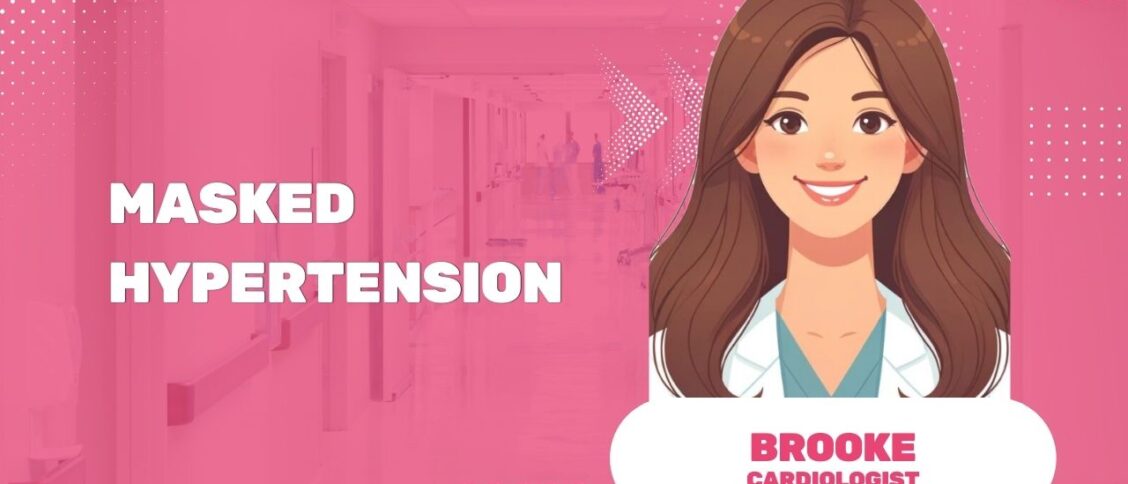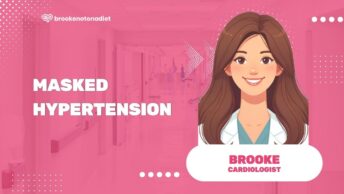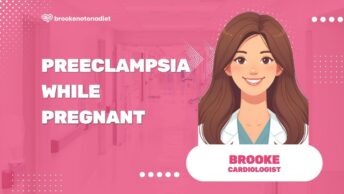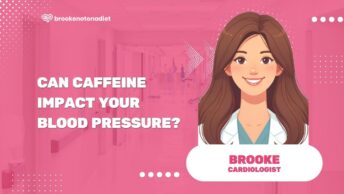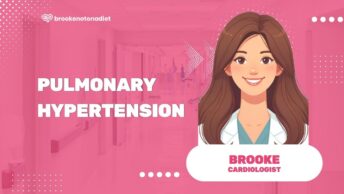Hypertension, often dubbed as the ‘silent killer’, can sometimes wear a mask. This cloak-and-dagger condition is known as ‘masked hypertension’. It’s a state where your blood pressure readings are normal at the doctor’s office but high at home. This can be a tricky situation, as it often slips under the radar, leading to serious health consequences if left unaddressed.
In this article, I’ll delve into the elusive world of masked hypertension. I’ll uncover the symptoms that might indicate you’re dealing with this hidden health hazard. Understanding these signs is crucial, as they can be your only clue to detecting this covert condition. So, let’s get ready to unmask hypertension and take control of our health.
What is Masked Hypertension?
Masked hypertension, as the name suggests, is a well-disguised, potentially harmful health condition. It’s like a snake in the grass, difficult to notice until it’s too late. Basically, it’s when you have high blood pressure, but it only shows up when you’re at home or outside the doctor’s office. When you’re in the clinician’s chair getting your blood pressure checked, everything appears normal.
Understanding Blood Pressure
To fully unveil this hidden foe, we must first discuss what blood pressure actually is. Your heart pumps blood into your arteries, causing pressure against the artery walls – this is your blood pressure. It’s essentially an indicator of how hard your heart is working.
A blood pressure chart can be a helpful tool in understanding these numbers. Blood pressure readings consist of two numbers, systolic and diastolic pressure. According to the American Heart Association, blood pressure falls into one of five different categories:
| Categories | Systolic mm Hg (top number) | Diastolic mm Hg (bottom number) |
|---|---|---|
| Normal | Less than 120 | Less than 80 |
| Elevated | 120-129 | Less than 80 |
| Hypertension Stage 1 | 130-139 | 80-89 |
| Hypertension Stage 2 | 140 or higher | 90 or higher |
| Hypertensive crisis | Higher than 180 | Higher than 120 |
The Invisible Threat – Masked Hypertension
Coming back to masked hypertension, it’s an enigma that tricks both the patient and the doctor. You could be tracking your blood pressure at home or even at a pharmacy using a blood pressure monitor only to find disturbingly high numbers. But, during your medical check-up, all signs of hypertension disappear – it’s as if you have perfectly normal blood pressure.
Such variation and inconsistency in readings can literally go under the radar, which could lead to serious health risks if left unaddressed. The main concern with masked hypertension is that it can silently enable underlying health conditions to progress, unhindered by detection or treatment.
Symptoms of Masked Hypertension
As an often overlooked, yet serious, health concern, masked hypertension presents a unique challenge. It has subtle signs that could easily be mistaken for regular daily stress. So, what are these symptoms? Let’s dissect them one by one.
High Blood Pressure
The prime symptom of masked hypertension is fairly foundational: high blood pressure when you’re outside a clinical environment. These elevated readings could materialize anywhere except during check-ups at your healthcare provider, hence the “masked” factor.
Headaches
Experiencing frequent headaches that don’t seem to have a clear cause? This might also be a sign of masked hypertension. Although they can occur for numerous reasons, unexplained headaches could be your body signaling that it’s working harder to pump blood around your circulatory system.
Dizziness
While less common, dizziness could be another sign. This sensation might result from your heart straining to deliver an adequate blood supply to your organs and tissues. Remember, these symptoms might seem innocuous, but if they’re frequent and coupled with high blood pressure readings at home, it’s wise to consult with a medical professional.
Overall, identifying and managing masked hypertension is a must-do for maintaining good health. Whether it’s investing in a good blood pressure monitor, developing a routine for checking blood pressure or exploring strategies for lowering blood pressure, proactive actions can help keep you in the clear from this hidden threat.
Causes of Masked Hypertension
Having already covered the concept of “masked hypertension” and its symptoms, let’s now delve into some common causes behind this hidden health threat. Unmasking the triggers of masked hypertension can be beneficial in controlling or even preventing this condition.
Stress and Anxiety
Everyday stressors are commonplace, but when stress and anxiety become chronic, they might very well contribute to masked hypertension. In stressful situations, the body releases hormones that temporarily increase blood pressure by causing the heart to beat faster and the blood vessels to narrow. When stress becomes the norm rather than the exception, this temporary spike can become a permanent one, effectively leading to chronic hypertension.
Moreover, activities aimed at lowering blood pressure such as meditation, yoga, or even just deep breathing exercises can often go unnoticed or ignored due to the constant hustle and bustle. Making time for relaxation and stress management is of utmost importance.
Medications
While there are drugs designed to help manage blood pressure ranges, some medications can ironically lead to hypertension. These potentially include:
- Non-Steroidal Anti-Inflammatory Drugs (NSAIDs)
- Certain antidepressants
- Decongestants
Even birth control pills and certain dietary supplements can raise your blood pressure.
Thus, it’s crucial to maintain an open line of communication with your healthcare provider. Discuss your medication regimen and how it might affect your blood pressure. Remember, it’s not just about medications. Habits such as abusing alcohol or taking illicit substances can also create a similar effect.
White Coat Syndrome
This is an interesting cause of masked hypertension. Known as “white coat syndrome,” this is a situation in which a person’s blood pressure spikes due to the anxiety of being in a medical setting. High readings are observed on the doctor’s blood pressure monitor, while at home it stays within the normal range.
This phenomenon can create a false sense of security and mask potential hypertension. It’s especially problematic when it prevents accurate diagnosis and management of high blood pressure. Consequently, if you suspect you might be dealing with white coat syndrome, it’s worth discussing this with your doctor.
Awareness of these potential causes is the first step towards managing masked hypertension effectively. A proactive approach can include regular monitoring at home, checking blood pressure frequently, especially if you’re experiencing frequent headaches or dizziness. Equipped with this knowledge, you could stay a step ahead of this hidden health hazard.
Diagnosis of Masked Hypertension
In this section, we’ll delve into the ways to diagnose masked hypertension, which often lurks silently without obvious symptoms. Adequate diagnosis strategies play a crucial role in flagging this condition for what it really is.
Ambulatory Blood Pressure Monitoring
Ambulatory Blood Pressure Monitoring (ABPM) is a trusted strategy in diagnosing masked hypertension. This sophisticated device, smaller than the typical blood pressure monitor, could be a lifesaver when it comes to detecting unseen health threats like masked hypertension.
ABPM involves the patient wearing a compact monitor for a period, usually 24 hours. During this time, the device automatically checks blood pressure at pre-set intervals, often every 15-30 minutes during the day and every 30-60 minutes at night. It gives detailed and realistic data about blood pressure ranges, shedding light on potential abnormalities that aren’t obvious in a clinical setting.
Here’s a markdown table of Average Blood Pressure Ranges during ABPM:
| Status | Average Daytime BP | Average Nighttime BP |
|---|---|---|
| Normal | Below 135/85 mmHg | Below 120/70 mmHg |
| High | Above 135/85 mmHg | Above 120/70 mmHg |
It’s necessary to clarify that there might be some disparity in readings due to factors like physical activity, stress, and sleep.
Home Blood Pressure Monitoring
Home Blood Pressure Monitoring is another sterling tool when it comes to lowering blood pressure if it’s on the higher side.
With this, you won’t have to worry about ‘White Coat Syndrome’ — anxiety-driven blood pressure spikes in a medical setting. A device for home blood pressure monitoring allows you to keep tabs on your vital statistics in the comfort of your living room, your kitchen, or your home office.
Regular monitoring at home takes the strain off visiting a healthcare facility and provides more consistent, everyday readings that doctors can use to prescribe the most suitable treatment strategy.
By using these two diagnostic tactics – ABPM and Home Blood Pressure Monitoring – masked hypertension can be identified early and managed effectively.
Treatment and Management of Masked Hypertension
Look, masked hypertension is tricky because it hides in plain sight. It does not reveal itself during routine check-ups, and that’s why it’s named as such. But once we get a proper diagnosis using methods like Ambulatory Blood Pressure Monitoring (ABPM) and Home Blood Pressure Monitoring, it then becomes a manageable condition. The two cornerstones of managing masked hypertension include lifestyle changes and certain medications.
Lifestyle Changes
Here’s the thing, you don’t need to turn your world upside-down to combat masked hypertension. It’s all about small yet consistent changes in your daily routines. By practicing a healthier lifestyle, you can significantly lower your blood pressure. Here are some well-established strategies to help you get started:
- Following a heart-healthy diet: Look toward the DASH (Dietary Approaches to Stop Hypertension) diet as a guide. Focus on fruits, vegetables, lean proteins, and whole grains while reducing sodium and saturated fat.
- Regular physical activity: 30 minutes of moderate exercise such as walking, cycling, or swimming can make a significant difference.
- Limiting alcohol and avoiding smoking: Alcohol can raise your blood pressure, and smoking can harm your blood vessels leading to hypertension.
- Managing stress: Sure, it’s easier said than done, but methods like mindfulness, yoga, and deep breathing techniques can help in improving your stress response.
- Regular blood pressure checks: Using a home blood pressure monitor can help you track your progress and ensure that your lifestyle changes are effective.
Medications
And while lifestyle changes are essential, sometimes they are not enough. Don’t fret, that’s where medications come into play. There is a wide range of drugs available that can aid in lowering blood pressure.
Conclusion
Masked hypertension isn’t something to be taken lightly. It’s a hidden threat, often triggered by stress, anxiety, certain medications, and even the anxiety of being in a medical setting. Early detection is crucial. Using methods like ABPM and Home Blood Pressure Monitoring can help catch it early. Remember, it’s not just about diagnosis – it’s about effective management too. Lifestyle changes like a heart-healthy diet, regular exercise, limited alcohol intake, no smoking, and stress management play a crucial role. And if these aren’t enough, medications can be a viable option. So, stay aware, stay proactive, and don’t let masked hypertension hide in the shadows. Your health is worth fighting for.

